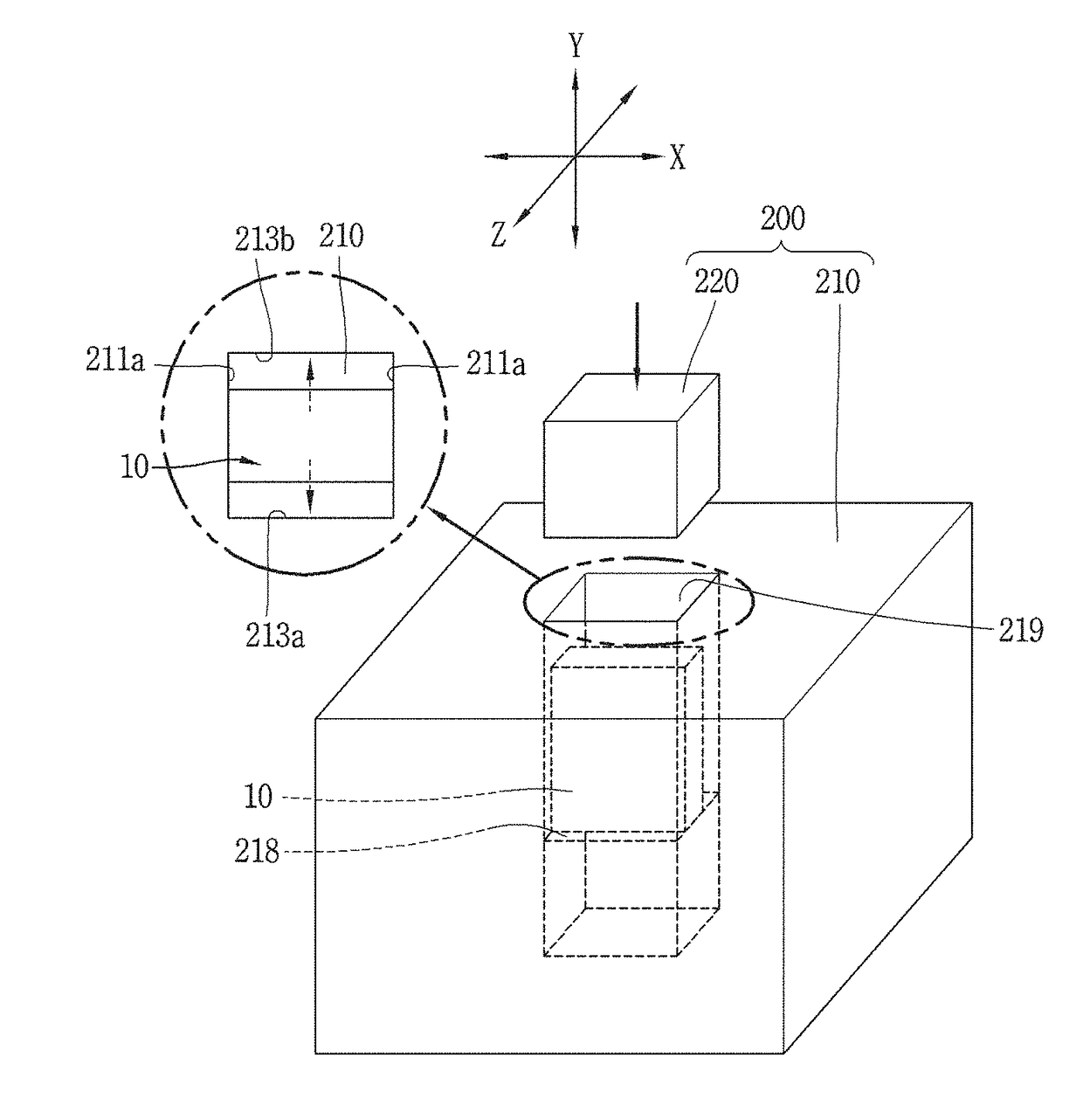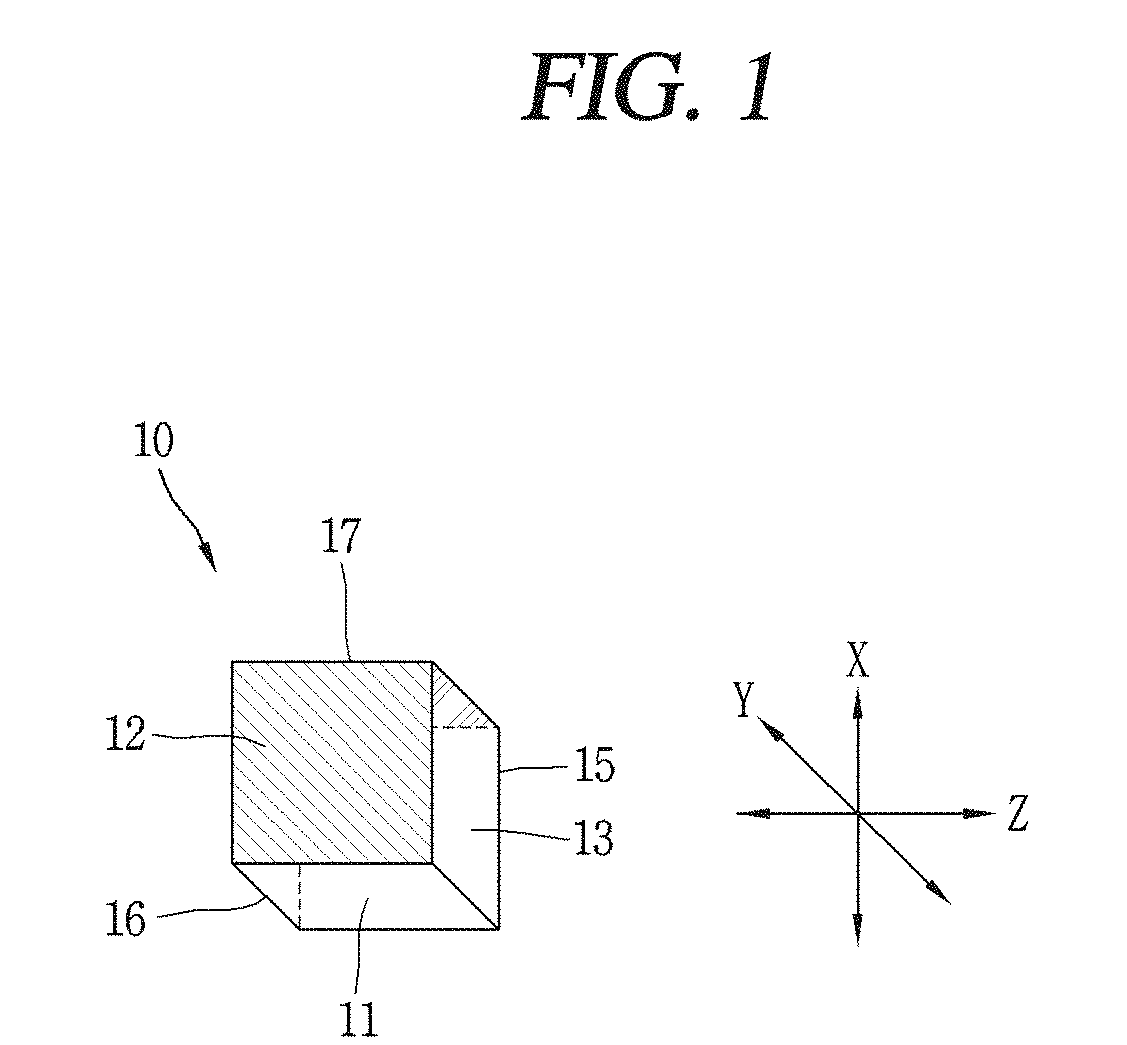Method for controlling microstructure and texture of tantalum
a technology of microstructure and texture, applied in the direction of metal-working apparatus, etc., can solve the problems of limited control of the microstructure and the texture of tantalum, the formation and the heterogeneous nature of microstructures and textures
- Summary
- Abstract
- Description
- Claims
- Application Information
AI Technical Summary
Benefits of technology
Problems solved by technology
Method used
Image
Examples
example 1
[0212]1-1. First Step: Step of Performing Cold Working on Tantalum Billet
[0213]A deformation rate of 20% is added to a tantalum billet in a height direction by performing a primary upset forging on the tantalum billet. The height of the tantalum billet on which the primary upset forging is performed is processed into 32 mm. A primary come-back forging is performed on the tantalum billet on which the primary upset forging is performed to again restore the tantalum billet into a rectangular prism with 40 mm×40 mm×40 mm.
[0214]Subsequently, a secondary upset forging having a deformation rate of 20% is performed on a breadth direction of the tantalum billet, and a secondary come-back forging is performed on the breadth direction. A tertiary upset forging having a deformation rate of 20% is also performed on a length direction of the tantalum billet, and a tertiary drawback is performed on the length direction.
[0215]A wedge forging is performed on the tantalum billet completely subjected ...
example 2
[0233]2-1. First Step: Step of Performing Cold Working on Tantalum Billet
[0234]A cold working is performed in the same manner as in the first step of Example 1.
[0235]2-2. Second Step: Step of Performing Primary Recrystallization Heat Treatment
[0236]A primary recrystallization heat treatment is performed in the same manner as in the second step of Example 1.
[0237]2-3. Third Step: Step of Performing Cold Forging and Selective Heat Treatment
[0238]A cold forging and a selective heat treatment are performed in the same manner as in the third step of Example 1.
[0239]2-4. Fourth Step: Step of Performing Cold Rolling on Tantalum Billet
[0240]A cold rolling was performed by setting the rotation angle of the tantalum billet at 90° every time, and setting the total reduction ratio at 80%. As the rotation angle was set at 90° every time, the rolling was performed four times, and an every reduction ratio was set so as to have a final thickness of 5 mm or less.
[0241]The tantalum billet was process...
example 3
[0244]3-1. First Step: Step of Performing Cold Working on Tantalum Billet
[0245]A cold working is performed in the same manner as in the first step of Example 1.
[0246]3-2. Second Step: None
[0247]3-3. Third Step: Performing Only Cold Forging and Performing No Selective Heat Treatment
[0248]A cold forging is performed in the same manner as in the third step of Example 1.
[0249]A selective heat treatment is not performed.
[0250]3-4. Fourth Step: Step of Performing Cold Rolling on Tantalum Billet
[0251]A cold rolling is performed in the same manner as in the fourth step of Example 1.
[0252]3-5. Fifth Step: Step of Performing Recrystallization Heat Treatment
[0253]A recrystallization heat treatment is performed in the same manner as in the fifth step of Example 1.
PUM
| Property | Measurement | Unit |
|---|---|---|
| Temperature | aaaaa | aaaaa |
| Temperature | aaaaa | aaaaa |
| Length | aaaaa | aaaaa |
Abstract
Description
Claims
Application Information
 Login to View More
Login to View More - R&D
- Intellectual Property
- Life Sciences
- Materials
- Tech Scout
- Unparalleled Data Quality
- Higher Quality Content
- 60% Fewer Hallucinations
Browse by: Latest US Patents, China's latest patents, Technical Efficacy Thesaurus, Application Domain, Technology Topic, Popular Technical Reports.
© 2025 PatSnap. All rights reserved.Legal|Privacy policy|Modern Slavery Act Transparency Statement|Sitemap|About US| Contact US: help@patsnap.com



